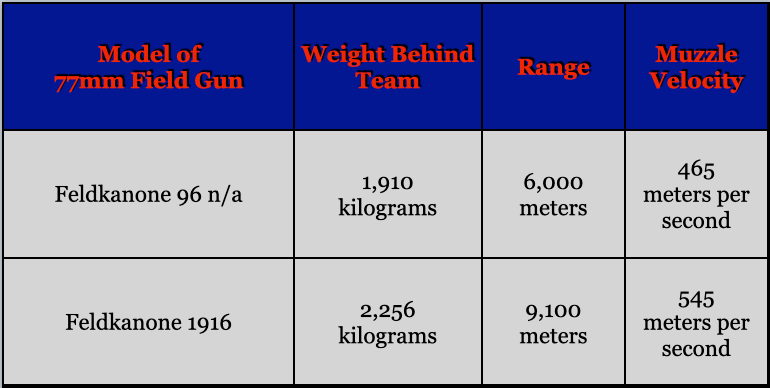In 1918, three of the six field gun batteries organic to each German infantry division attacking on the Western Front were employed as “escort batteries” (Begleitbatterien.) Allocated to infantry regiments at a rate of one battery per regiment, these engaged, at close range and by means of direct laying, machine gun nests that had survived the ferocious bombardments that preceded each offensive.
As a rule, the batteries chosen for this duty were armed with the older of the two standard German field guns of the second half of the First World War, the 77mm Feldkanone 96 n/A. One reason for this was weight. When configured for transport, the older piece weight 356 kilograms less than the newer 77mm field gun, the Feldkanone 1916. Another reason was the desire to preserve the newer field gun for fire at longer ranges, particularly the task of delivering poison gas to places where enemy batteries might be located.
On 9 May 1918, a series of experiments conducted near the village of Maubert-Fontaine demonstrated that, all other things being equal, shells fired by the newer piece wrought more destruction upon machine gun nests protected by walls or embankments than shells fired by the older field gun. At the same time, the differences in effects that depended upon the speed with which projectiles traveled paled in comparison to those that resulted from different combinations of shells and fuzes.
Source: Chef des Generalstabes des Feldheeres, Ic/III 86 111 op., 13 May 1918, Military Archive of the Federal Republic of Germany (BA/MA) PH 3/403.






